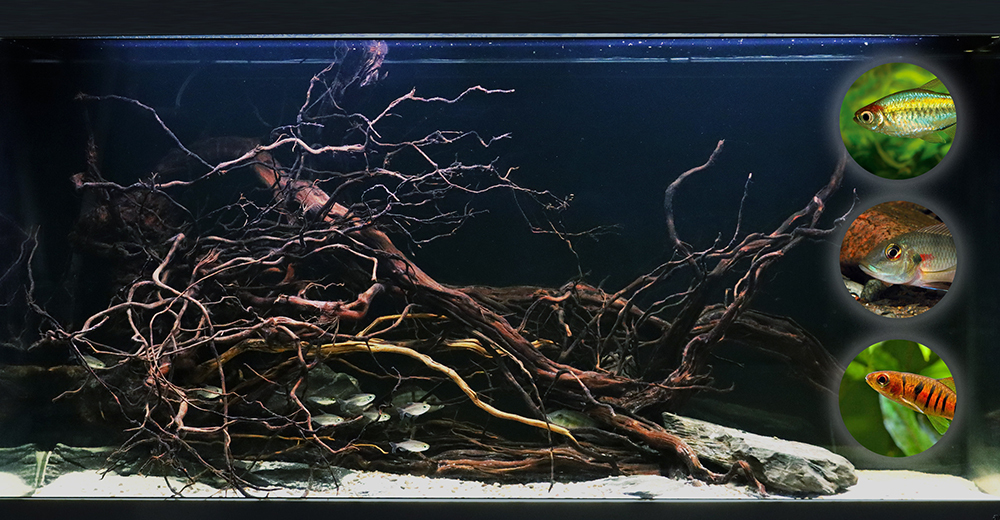Despite the exceptions, most of the fish cannot regulate their body temperature in relation to the water that surrounds them.
There are fish that live in cold polar oceans or in stable and warm waters of tropical seas. Some fish experience significant temperature fluctuations during the changing seasons or even throughout the course of a day, especially when a sudden thunderstorm swells the waters of a stream.
Fish that inhabit shallow waters may encounter significant temperature variations between day and night.
Each fish that lives in these environments has evolved over millions of years to adapt to those conditions. All bodily functions are regulated by a series of chemical reactions mediated by specific molecules called enzymes, which are designed to activate within a certain temperature range.
Is the aquarium thermometer really useful
Quick temperature changes can cause significant problems for fish. In the wild conditions they would respond by quickly moving to different areas of the river, sea, or lake to mitigate the shock. However, in an aquarium, fish cannot move and even a fast water change in winter can stress the inhabitants of our tanks. Their immune system weakens and the risk of pathogen attacks increases.
It is important, therefore, to closely monitor the water with a thermometer, such as Amtra Slim Thermometer with suction cup or Amtra Thermometer with suction cup.
If the exposure to non-optimal temperatures (either too low or too high) continues over time, the fish becomes lethargic, it stops feeding, it often becomes darker, while its bodily functions are going to be gradually compromised.

What to do if we have fish with different temperature tolerances in the same tank?
Unless you are keeping coldwater fish – we’ve discussed the risks of exposure to high summer temperatures – it is important to ensure that those tropical fish in our aquariums are maintained at a suitable temperature for their well-being. Often we raise species together that, while sharing similar water chemistry requirements, do not have the same temperature tolerances.
The average temperature typically recommended for a home aquarium is 24-25°C because most ornamental tropical fish that inhabit our tanks (both freshwater and saltwater) can optimally digest food, grow, and reproduce at this temperature.
To maintain this temperature steadily, you can rely on a practical and reliable accessory: the aquarium heater.
How does the aquarium heater work?
The aquarium heater is an electric resistance with a thermostat that, when heated, transfers its heat to the aquarium water. The thermostat ensures that the resistance only turns on when the temperature falls below the set point and turns off when it reaches it.
AMTRA KLIMA EVO and AMTRA KLIMA NANO PRESET heaters are made with quality materials and reliable thermostats so that they do not waste electrical energy. They can be placed in the internal filter or, thanks to their suction cups, in an aquarium area where water circulation can quickly equalize the temperature of the aquarium.
The best way to heat the water (and the most aesthetically pleasing one) is to place the heater inside the external filter. The new AMTRA FILPRO EX T external filters have a practical and efficient electronically controlled heater that combines aesthetic requirements with the efficiency of positioning the resistance directly in the area of the highest water flow in the aquarium.

AUTORE

Lorenzo Tarocchi
Laurea magistrale in Agraria, Master in Acquacoltura e Ittiopatologia.
Classe 1986, Laurea magistrale in Agraria, Master in Acquacoltura e Ittiopatologia. Appassionato di pesca e di tutto quello che vive sott’acqua, inizia lavorando in un negozio di Acquari nel 2010 ed in seguito in una delle maggiori serre italiane specializzate nell’importazione di pesci tropicali, collaborando nel frattempo con il Museo di Storia Naturale dell’Università di Pisa e con importanti aziende del settore.



